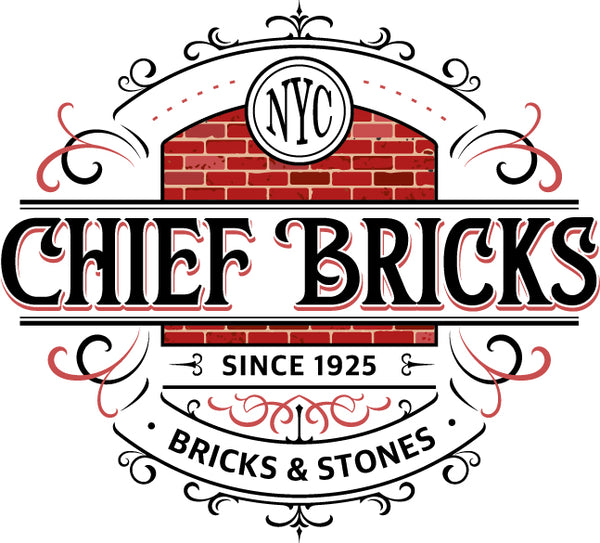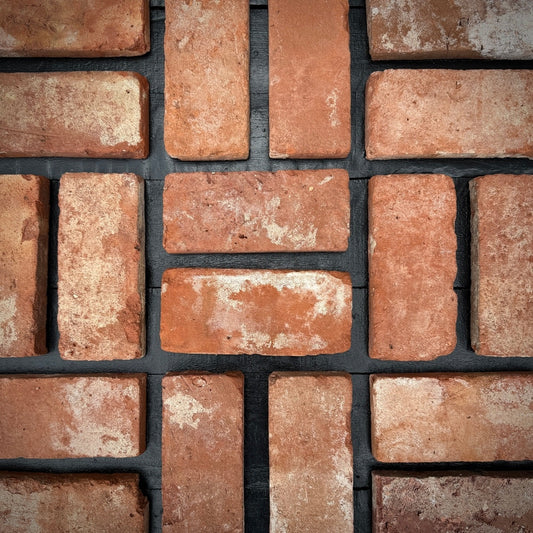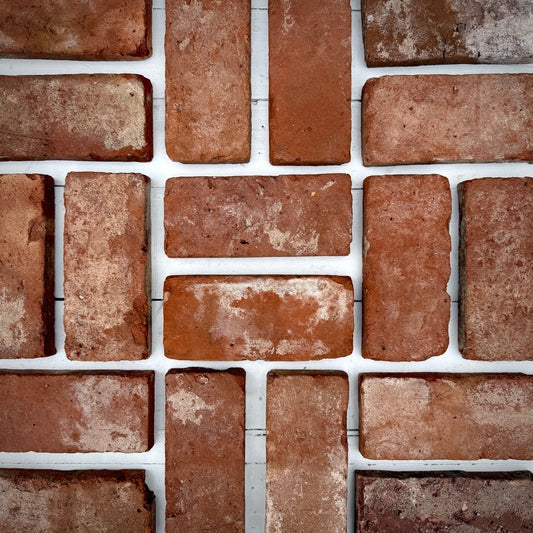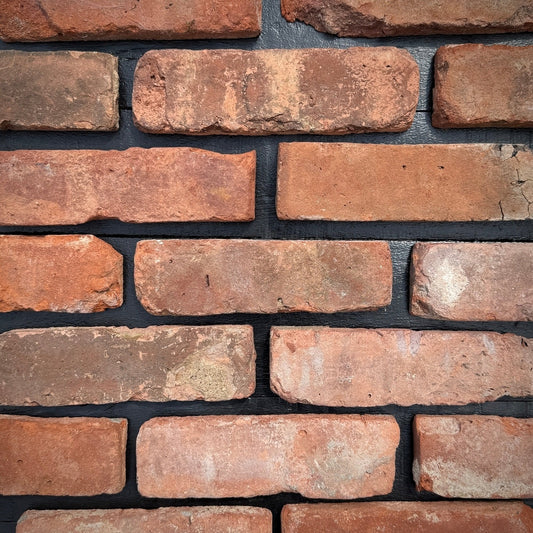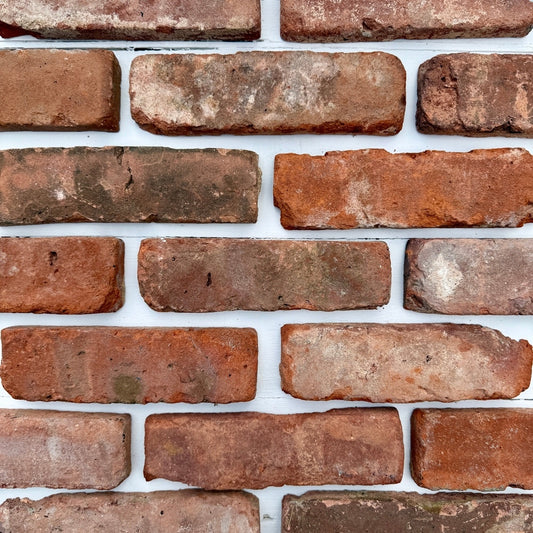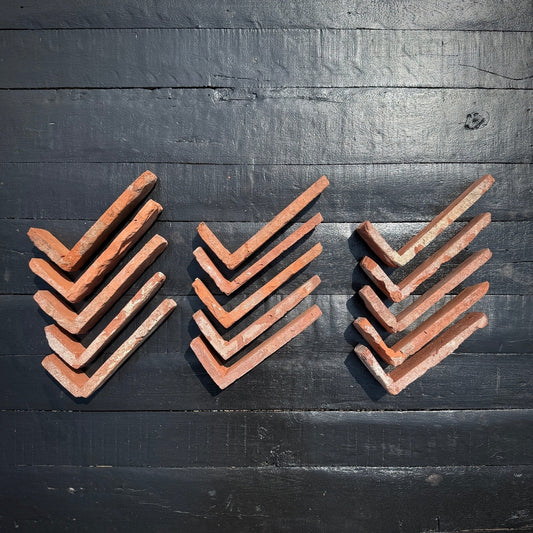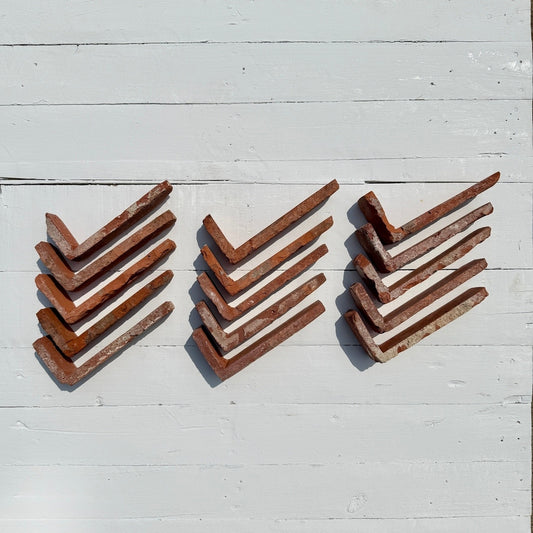You've seen those beautiful, old brick walls in trendy lofts and cozy cafes. They feel warm and full of history. You've probably thought about getting that look in your own home, but the idea of dealing with heavy, full-sized bricks is a lot.
That's where a reclaimed thin brick veneer comes in. It gives you the exact same authentic character without the major construction project. This is real history you can put on your walls, and a reclaimed thin brick veneer makes that dream a reality for just about any room.
Table of Contents:
- So, What Exactly is a Reclaimed Thin Brick Veneer?
- The Big Benefits of Choosing Old Brick
- Where to Use Reclaimed Thin Brick Veneer
- How to Find and Choose Your Brick
- A Simple Guide to Installation
- The Finishing Touches Matter
- Caring For Your New Brick Wall
- Conclusion
So, What Exactly is a Reclaimed Thin Brick Veneer?
Let's clear this up right away. This isn't fake brick from a big box store. Those are often made of plastic or foam and just look cheap. You can spot them a mile away.
Reclaimed brick veneer is the real deal, also known as veneer brick. It's made from actual antique bricks salvaged from old, demolished buildings, many of which are over a hundred years old. These historic buildings are often from cities rich in brick architecture like New York.
Workers perform a process of veneer cutting on these old bricks. The result is a thin slice, usually about a half-inch thick, that shows the original face brick. This gives you the original, weathered patina of the brick without the weight and bulk of the whole thing.
The Story Behind Every Brick
Each slice of reclaimed antique brick carries a piece of the past. Some might have faint traces of old paint or mortar. Others have subtle color shifts from decades of sun and rain, a naturally weathered look that adds immense rustic charm.
When you put these on a wall, you're not just adding a design element. You are installing a mosaic of history with each vintage brick. This is something that can't be replicated with new materials, as hard as they may try.
Real Brick vs. Fake Panels
It's easy to get confused by all the options out there. Many companies sell manufactured stone veneer panels. They try to mimic the look of an antique brick veneer, but it never quite hits the mark.
Faux panels often have repeating patterns, which is a dead giveaway. They also lack the genuine texture and color variation of real kiln fired clay brick. An actual reclaimed thin brick veneer gives you a surface that is truly one-of-a-kind because every single one of the bricks reclaimed is different.
The Big Benefits of Choosing Old Brick
You might be wondering if going with reclaimed bricks is worth it. It absolutely is. The upsides go way beyond just looking good.
This material solves a lot of problems that come with traditional masonry. And it brings a kind of historic charm you can't buy off a shelf.
Authenticity You Can See and Feel
There is just no substitute for real, aged brick. The texture is rough and varied, and the colors are deep and natural. It feels solid and permanent.
A wall covered in reclaimed brick wall veneer adds instant warmth to a room. It creates a feeling of stability and comfort that modern drywall often lacks. Guests will want to reach out and touch the weathered brick because it looks so genuine.
It's Surprisingly Lightweight
Here's a huge plus. Because these are just thin slices, they don't weigh much. This means you don't need to reinforce your walls or pour a new foundation to support them.
The thin format opens up design possibilities. You can safely install them on almost any surface, including drywall or plywood. This makes it a great option for renovations and DIY projects with an easy installation process.
A Green Building Choice
Using reclaimed materials is one of the best things you can do for the planet. Instead of heading to a landfill, these old clay brick pieces get a new life. This is a core principle of sustainable building.
Choosing reclaimed products reduces the need to manufacture new materials. This saves energy and cuts down on pollution from the kiln fired process. So you can feel good about making an environmentally friendly decision for your home.
Where to Use Reclaimed Thin Brick Veneer
The versatility of thin brick veneer is one of its biggest selling points. You aren't limited to just one or two applications. A veneer interior can truly transform a space.
Here are some of the most popular places people are using it to add amazing character to their homes and how these walls add to the aesthetic.
- Living Room Accent Walls: A brick accent wall behind a sofa or TV creates a powerful focal point. It makes a room feel more grounded and interesting.
- Kitchen Backsplashes: Tired of subway tile? A brick backsplash adds a rustic, farmhouse-style touch. It's a classic look that never goes out of style.
- Fireplace Surrounds: Nothing looks more natural around a fireplace than brick. It creates a cozy, traditional vibe that is perfect for gathering around.
- Home Offices: Bring some of that industrial loft energy to your workspace. It can make your office feel more creative and inspiring.
- Basement Remodels: Exposed bricks can turn a drab basement into a cool pub or family room. It makes the space feel finished and inviting.
- Mudrooms & Entryways: Create a durable and stylish first impression. A wall veneer here can handle the scuffs of daily life while looking great.
How to Find and Choose Your Brick
With the decision made to use reclaimed brick, the next step is finding the right size and color. Not all reclaimed brick is the same.
You can shop reclaimed bricks on our store and we ship nationwide. Before you buy brick, it is always a good idea to get your hands on some samples.
A Simple Guide to Installation
You might think installing brick is a job only for a professional mason. With thin brick veneer, that's not the case. It's much more like installing a tile brick product, and many homeowners can handle it themselves.
With a little patience, you can get amazing results on your veneer project. Just break it down into simple steps.
Step 1: Plan and Prep Your Wall
First, measure your project area carefully to determine the total sq ft needed. It is wise to order about 10% extra material to account for cuts and breakage. Add a sample to your shopping cart so you can confirm your choice before placing a large order.
Your surface needs to be clean, dry, and flat. You can apply thin brick directly over drywall, cement board, or plywood. Just make sure to wipe away any dust or grease first.
Lay out some of your bricks on the floor first. This lets you mix up the colors and textures from different boxes for a natural, random look. Don't skip this part.
Step 2: Apply Your Adhesive
You'll need a good quality thin-set mortar or a construction adhesive made for brick veneer. Follow the mixing instructions carefully. You want a consistency like peanut butter.
Use a notched trowel to spread a thin layer of adhesive onto a small section of the wall. Don't cover too large of an area at once. The adhesive will start to dry.
Step 3: Place the Bricks
Start at the bottom corner of your wall and work your way up. Press each brick into the mortar with a slight wiggle. This makes sure you get good contact.
You can use tile spacers to keep your grout lines consistent. A standard 3/8 inch joint is common, but this can vary depending on whether your bricks are a modular size or irregular. Or you can eyeball it for a more organic, old-world look.
Step 4: Fill the Gaps (Grouting)
After the adhesive has set for at least 24 hours, it's time to grout. You'll mix your mortar and load it into a grout bag. This works just like a pastry bag for icing a cake.
Squeeze the mortar into the joints between the bricks. When it has started to firm up a bit, you can use a small tool called a tuck pointer to smooth it out. This step makes a huge difference in the final appearance, and you can find many tutorials online that show how to grout.
The Finishing Touches Matter
A couple of extra details can take your project from looking good to looking incredible. You want the illusion of a solid brick wall. This is how you achieve it.
Think about how your wall will end or turn a corner. Planning for this ahead of time will save you headaches later.
Wrapping Those Corners
What happens when your brick wall meets an outside corner? You don't want to see the thin edge of the veneer. It would instantly ruin the effect.
That's why they make L-shaped corner pieces. These wrap around the corner seamlessly. This simple piece maintains the look of a full, structural brick wall.
What About the Floor?
If you really love the brick look, you don't have to stop with the walls. You can get reclaimed brick floor tile made from the same material. These are cut slightly thicker to handle foot traffic, creating durable and beautiful brick veneer flooring.
Using a reclaimed brick floor in a kitchen, mudroom, or entryway creates a beautiful surface. It's a great way to tie the whole room together for a cohesive design. This type of veneer flooring is distinct from much thicker brick pavers or antique brick pavers, which are typically used for outdoor patios and walkways.
Further reading: Transform Your Space with Thin Brick Floor Tiles
Caring For Your New Brick Wall
One of the best parts about a brick wall is how low-maintenance it is. These bricks have already survived a hundred years or more. They can certainly handle modern life.
Just a little basic care will keep them looking great for decades to come. There's no need for special chemicals or complicated routines.
For regular cleaning, all you need is a vacuum with a soft brush attachment. This will get any dust out of the crevices. If you get a spill on it, you can just use a damp cloth and a little bit of mild soap to gently clean the spot.
If your brick is in a high-traffic area like a kitchen backsplash, you might consider sealing it. A good quality matte sealer will protect it from stains without adding a fake-looking shine. Make sure you choose a breathable one made for masonry.
Further reading: Brick Sealing Basics: Protect Your Home Year-Round
Conclusion
Bringing a sense of history and warmth into a modern home can be a challenge. With a reclaimed thin brick veneer, you get all the character of a century-old wall. It comes in a format that is easy to install and love.
It's a beautiful, sustainable, and authentic choice that adds value and personality to any space, whether you choose a Louis brick veneer from St. Louis or a classic Chicago common brick. If you've been dreaming of that perfect reclaimed brick wall, now you know how to make it happen.
